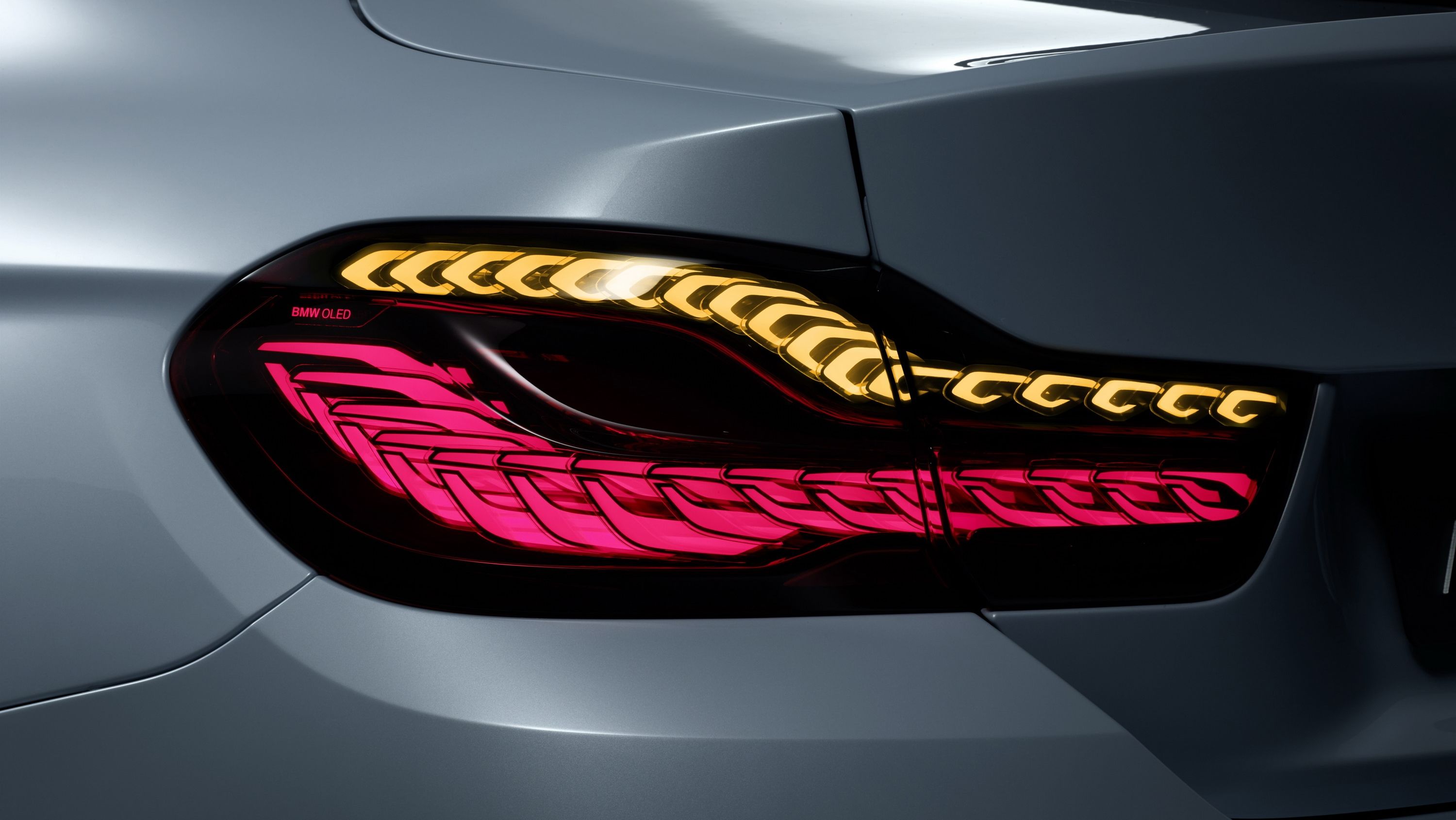Light Emitting Diodes, or LEDs, have become utterly prevalent in the automotive industry these days, but BMW->ke178 is reaching to the next step with OLED technology. Previewed in its M4 Light Concept earlier in 2015, BMW says it’s ready to use OLEDs in its next M-division->ke546 vehicle.
The new acronym stands for Organic Light Emitting Diodes and will likely replace the current crop of LED technology. It’s already starting in the television sector, with LG producing the worlds’ first OLED TV, which also happens to be one of the thinnest TVs on the market.
The system works by placing thin films of organic material – in this case carbon-based materials – between two conductors. The super small structure means BMW designers can incorporate intricately detailed designs into lighting elements. It’s that super small structure that lends OLED its attractiveness. What’s more, the OLED bulbs are eco-friendly, containing only trace amounts of Iridium, a non-toxic heavy metal.
As for the next M vehicle, BMW is set to launch its 2016 M2 within the coming months. It’s a sure bet its rear end will be graced with OLED taillamps. As for the rest of the car, expect a smaller, meaner version of the M4 Coupe with plenty of power on hand and a fierce appetite for corners.
Continue reading to learn more about BMW's future OLED taillights.
Why it matters
The migration to OLED bulbs only serves as an example of how automakers strive to incorporate the next big thing within their vehicle design. OLED technology does allow for designers to have more options, along with the marketing team to have the term “organic” in the press release. That’s a win-win in this game.
Beyond that, the OLED taillamps seen in the video below do look fantastic. It’ll be interesting to see if this will be an extra-cost option or if BMW will begin rolling out the OLED bulbs in everything.


